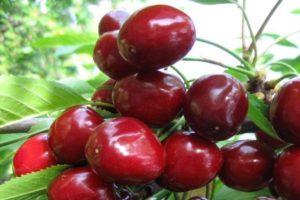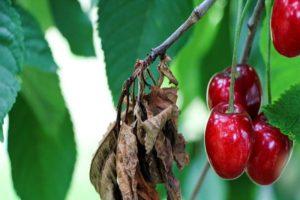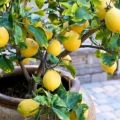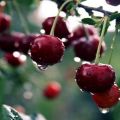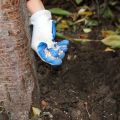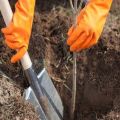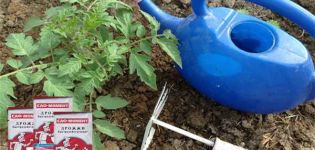Planting, growing and proper care of cherries, how to feed watering how to water
Sweet cherry is one of the most common garden trees in our country, the history of its appearance goes back to the distant past. Currently, such a wonderful tree is no less popular, but to get a good harvest, you need to put in a lot of time and effort. The proposed material will acquaint the reader with the rules for planting cherries and caring for them.
Preparing berries for planting
More than three thousand varieties of this tree are known in the modern world. Some varieties of long-livers have a lifespan of more than one hundred years. Many novice gardeners do not know which variety to give preference to when choosing a seedling for their site.
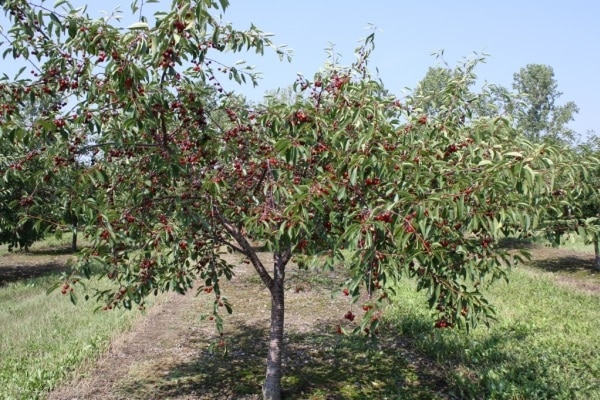
Variety selection
When choosing a tree type, you should pay attention to the following characteristics:
- pollination - self-fertile; partially self-fertile; pollinated by insects and wind;
- flowering time of a tree and timing of fruit formation - early, middle, late;
- trunk height and crown shape - vigorous, medium-sized, low-growing;
- taste, color and shape of berries - yellow, with a pink barrel, red;
- fleshy and juicy fruits - juicy, fleshy;
- berry size - large, medium, small;
- frost resistance - frost-resistant, medium-resistant, heat-loving.
Novice amateur gardeners who are planning to plant cherries on the site should receive recommendations in advance on choosing a variety in the city gardening society, where they will tell you all the intricacies of tree care and help you choose a seedling.

Requirements for soil and planting site
This tree prefers neutral soil. Considering that sod-podzolic, with high acidity are more typical for central Russia, it is recommended to improve its properties by liming. Lime application rates depend on the severity of the soil and are (in grams per square meter):
- light sandy loam - up to four hundred;
- heavy loamy - up to eight hundred.
Liming promotes better absorption of nutrients and participates in the formation of the fruit bone. It is better to carry it out on the site in the fall or early spring, by evenly distributing lime on top of the soil or by burying a shovel bayonet (about twenty centimeters) to a depth.

Another important circumstance that must be observed is that cherries need land that is not waterlogged, loose and freely letting in air. The close occurrence of groundwater leads to a slowdown in the development of young shoots and drying out of the tree, starting from the upper part.
Light mode
This tree is very fond of warmth, therefore, the prerequisites for successful growth are abundant sunlight. The place for planting a seedling should not be shaded by other trees and buildings.
In order to increase yields, it is recommended to plant at least two trees of different varieties, not too far from each other to ensure cross-pollination of the trees.
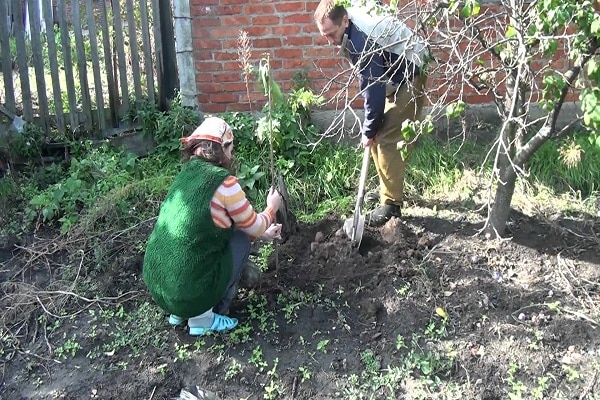
How to plant a tree correctly
After the seedling is selected, and a suitable place is determined, it remains to plant a tree. But there are important features that must be taken into account. More details about the landing rules.
Timing
Choosing the right planting time is very important. This circumstance depends on the climatic characteristics of the region. The optimal landing dates are as follows:
- autumn is the best option for a warm climate, planting is performed shortly before frost, until the soil is frozen;
- spring - until the buds swell. Better for northern regions. The seedling is selected in the fall, the root part is moistened, wrapped in cloth, then wrapped in plastic wrap and dropped in the basement until spring.

But these recommendations should not be taken as dogma - in the southern regions, a tree can be planted in spring, but at this time of year it is harder to find a suitable seedling variety.
The soil must be prepared in advance. If planting is carried out in the autumn, the site must first be dug up, adding compost, potash fertilizer and superphosphate. If the ground is too sandy, a little clay is added and vice versa.
When planting a seedling in spring, these activities are carried out in the fall, and in the spring mineral fertilizers are additionally applied.
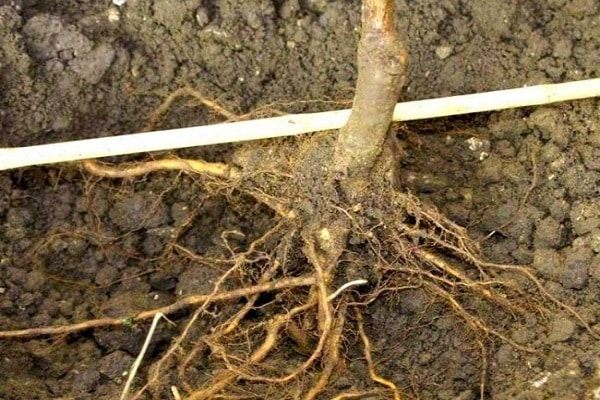
Planting pit preparation
The pit, when planted in the fall, should be prepared in six to seven days. When preparing it, you must be guided by the following requirements:
- provided: depth - about eighty centimeters and width - up to a meter;
- when planting several trees, the distance between the pits should be from three to five meters;
- the planting scheme in the above case should provide free access to sunlight - the seedlings are located from east to west so as not to obscure the sun to each other;
- when digging a hole, the upper and lower (infertile) soil layers should be separated;
- a stake is driven in the center of the pit, with a height calculated so that the upper part protrudes up to half a meter above ground level;
- part of the upper (fertile) layer of the earth is mixed with rotted compost or manure, superphosphate (two hundred grams), sulfuric potassium (sixty grams) and ash (half a kilogram) are added;
- the prepared pit is watered and left for a couple of weeks for the earth to settle.
If the tree is planted in the spring, the pit is prepared in the fall, and in the spring it remains only to apply fertilizer.

Preparing a seedling for planting
Before planting a tree, it is carefully examined. Weak and damaged roots are removed. A dry root system must be moistened. To do this, it is soaked in water for up to eight hours.
When transplanting, seedlings with a closed soil remnants of the root system suffer less. In this case, soaking is not required, during preparation it is important not to disturb the soil layer on the roots, which can lead to damage to the roots.
At the beginning of planting, the tree is placed in the center of the pit and the roots are sprinkled in half, shaking slightly to compact the soil a little. After that, water is poured (about ten liters), and the hole is dug to ground level.
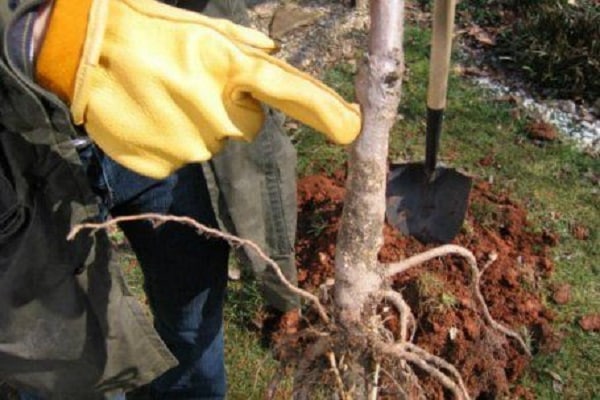
Note! When placing a tree, it is necessary to ensure that the root collar is above the ground.
To achieve this position of the tree, it is preliminarily held at a height of up to five centimeters above the required one, and after the soil has settled, the trunk is lowered to the required level.
The ground in the planting pit is slightly trampled, then another bucket of water is poured out and peat or organic fertilizer is applied. To exclude the swaying of the tree by the wind, it is tied to a hammered peg.
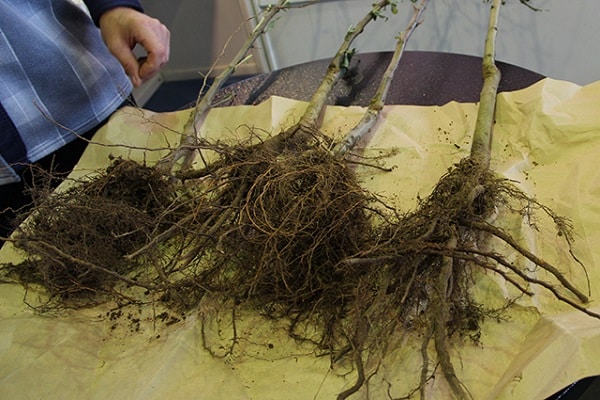
Tree care in the first 4 years after planting
An important event in the first four years after planting is the correct formation of the crown, which is achieved by pruning. When the crown is formed, pruning is done in moderation to remove damaged and old branches, once every three years.
When growing a young tree, it is necessary to completely remove the weeds near the trunk. The adjacent soil must be mulched to prevent moisture evaporation.
The first watering should be carried out only after the tree has faded, the next time - in June, then - a month later. During flowering, watering should be completely excluded, otherwise the cherries can throw off the set fruits.
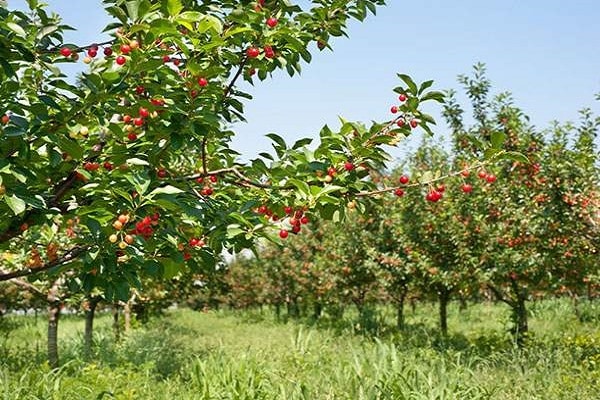
The tree also needs to be watered in October; top dressing is left for the winter. In the third year, organic fertilizers are applied - up to eight kilograms. Nitrogen fertilizers are applied twice a year - after the snow melts and in the middle of summer. Phosphorus and potash - in early autumn. In spring and autumn, it is necessary to whitewash the trunks with lime to protect the tree from sunburn and heal damage to the bark after frost.
How to properly care for and feed adult cherries
For an adult tree, the frequency of organic fertilization remains three years. Top dressing is carried out by applying liquid fertilizers up to four times per season.
During flowering
Spring care is limited to:
- cleaning weeds and loosening the soil;
- the introduction of nitrogen fertilizers.
It is advisable to limit watering for this time; pest control should be performed earlier.

During fruit ripening
Fruiting time depends on the cherry variety and climatic conditions. But, in any case, this happens in the summer - from mid-June to the end of July.
During the ripening period, it is necessary to ensure the safety of the berries from birds, regularly loosen the soil in order to prevent the top layer from drying out after rain. Top dressing is carried out with potash and phosphorus fertilizers.
With a large number of berries, it is necessary to support the branches so that they do not break off under the weight of the fruits.
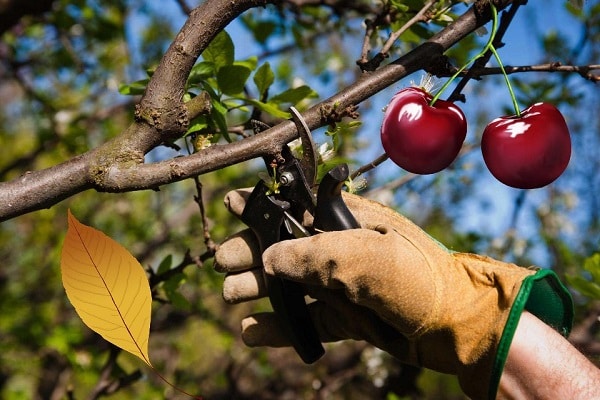
After harvest
When the fruits are harvested, the development of the tree slows down, the sap circulates slowly, which favors pruning. Damaged and excess branches are removed, the cut points are processed with garden pitch. Pruning will ensure proper crown formation and protect the tree from disease.
When pruning, they are guided by the following requirements:
- branches adjacent to the trunk at acute angles are removed;
- the crown is thinned out;
- damaged branches are removed;
- one-year-old processes are shortened by a third of their length.
To carry out the work, a garden saw or a sharply sharpened knife is used, the use of a pruner injures the branches.
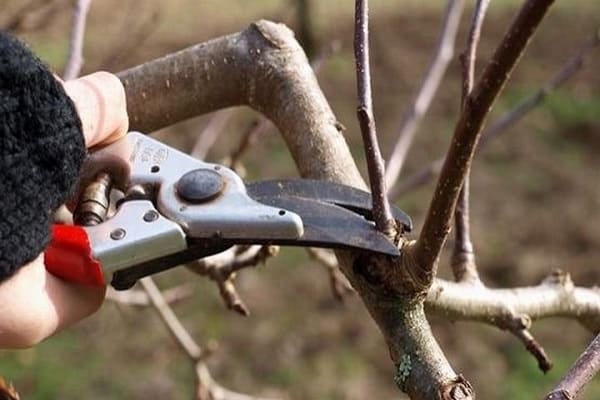
Preparing a tree for wintering
Preparation for winter includes the following activities:
- abundant watering;
- application of organic fertilizers;
- whitewashing the trunk;
- digging up the soil under the tree.
Mulching the soil during digging contributes to long-term moisture retention. Top dressing should not be done in warm weather, as this will cause untimely growth of branches, fertilizers are applied before the onset of frost in order to exclude premature decomposition of nutrient components.
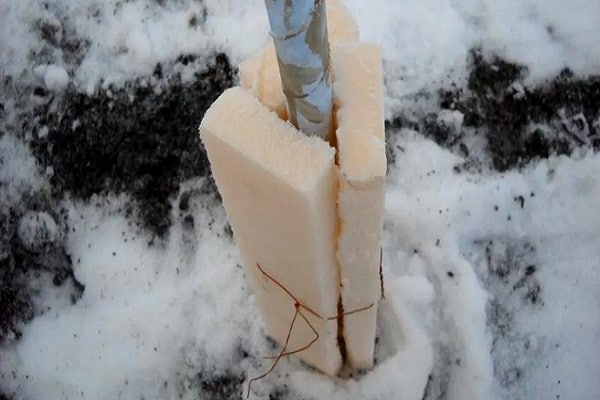
The nuances of caring for an old tree
There are some nuances when caring for an old tree:
- severe bark cracking is possible. Places of damage should be treated with a protective compound;
- it is necessary to ensure that the branches are not damaged by the weight of the berries, since their fragility increases over the years;
- you should regularly rejuvenate the tree by removing old shoots and making room for the young.
In old trees, branches begin to die off, therefore, simultaneously with rejuvenation, it is necessary to remove dried out shoots.
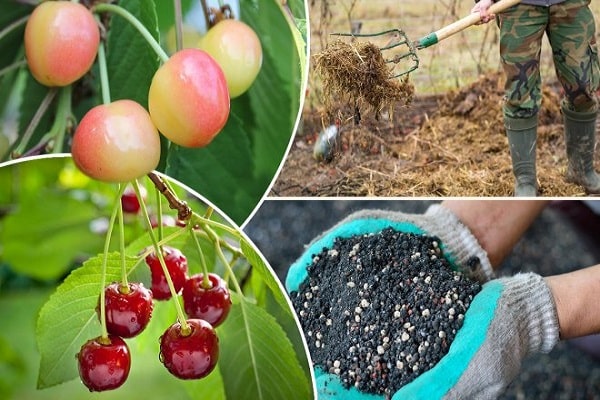
Diseases and pests. Ways to deal with them
Sweet cherry, in most cases, is susceptible to fungal diseases:
- coccomycosis;
- moniliosis;
- clotterosporium disease.
The methods of struggle include:
- removal of affected areas;
- cleaning and disinfection of damage with a 1% solution of copper sulfate and subsequent treatment with garden varnish;
- four treatments are carried out: the first - with copper sulfate, before the start of sap flow; the second - with Bordeaux liquid, after flowering, the third - three weeks after the second; the fourth - three weeks before picking berries.
Of the pests, aphids and cherry flies are the most dangerous. To protect the tree, it is necessary to spray with a confidor solution in early spring, after two weeks, a second treatment is performed.
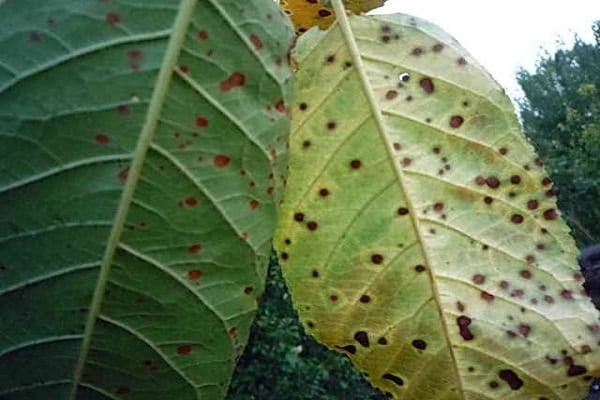
What problems arise
During the development of the tree, some troubles are possible that interfere with normal growth and fruiting. More details about possible problems and ways to solve them.
Does not grow
Poor seedling growth can be caused by high acidity of the soil or lack of nutrients. If liming is not done in a timely manner, it is recommended to add lime solution to the near-stem zone; form holes in the ground up to twenty centimeters deep. With a lack of nutrients, it is necessary to fertilize with nitrogen, phosphorus and potassium fertilizers.
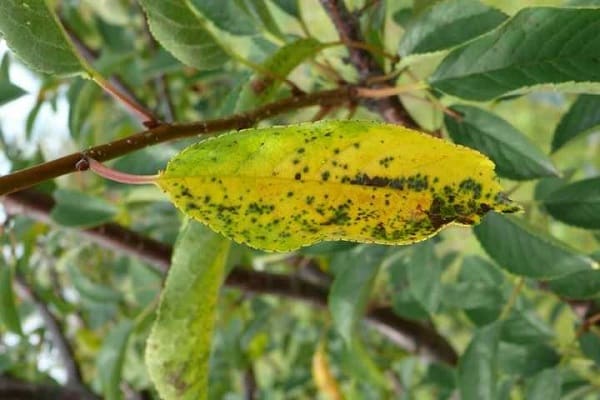
Does not bloom
The lack of colors is due to the following possible reasons:
- the wrong choice of the landing site - a lack of sunlight;
- insufficient development of the seedling - for some varieties it takes about five years before the first flowers appear;
- excessive soil moisture or close occurrence of groundwater.
If the conditions for planting a tree are not chosen well, it is necessary to transplant it, otherwise the seedling will be sick for a long time, and it will not be possible to wait for the harvest for a long time.
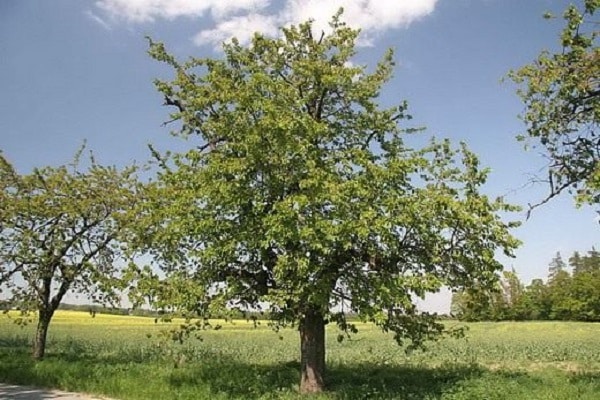
Doesn't yield crops
The lack of a crop may be due to the following circumstances:
- improper pollination;
- bad weather;
- poor quality fertilizer;
- excessive soil moisture;
- clogged soil, leading to insufficient oxygen supply to the root system;
- high acidity of the earth;
- excessive crown density.
By eliminating the listed problems, the gardener will achieve the long-awaited harvest.
Spend more time in the garden and the trees will delight you with spring flowering and abundant fruiting.

